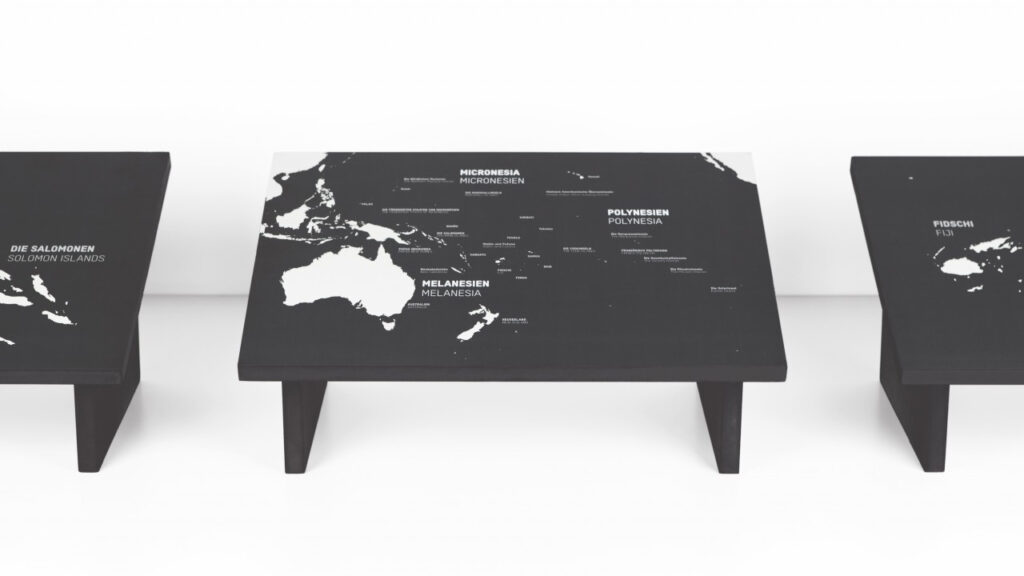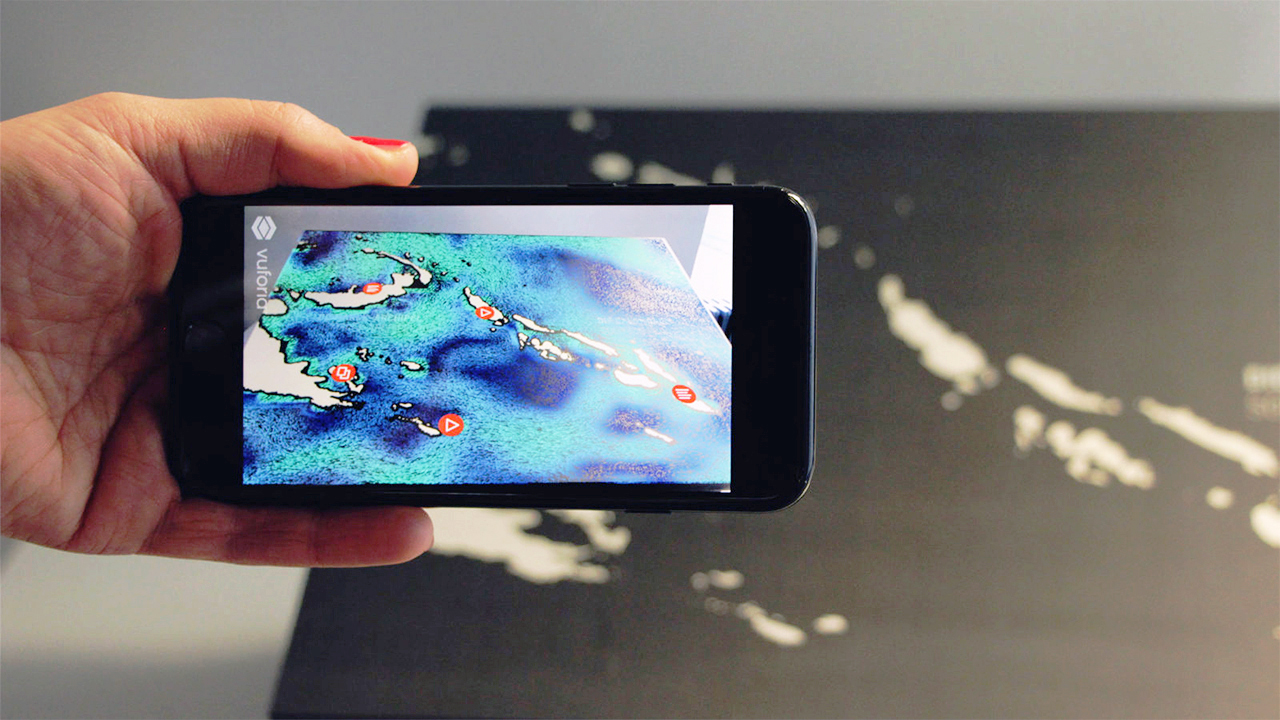In September, the Ethnological Museum of Berlin opened a new exhibition space in the West Wing of Humboldt Forum to permanently showcase about 20,000 objects from the cultures of a breadth of civilizations. One section, Oceania: People and the Sea – A Sea of Islands, is an exhibition of boats from the region, highlighting its residents’ way of life.
Set to accompany the exhibition is SwellAR, a project currently in development that aims to further illustrate how climate change has impacted Oceania’s environment and its people. The continent’s many small islands have long been vulnerable to changes in sea levels — over the past 90 years, Fiji and Samoa have seen their shorelines recede by as much as 1.5 feet.
SwellAR aims to draw visitors’ attention to such dramatic shifts by inviting them to scan an interactive 8 x 13-meter Oceania map with an app to call up real-time climate visualizations and audio-visual testimonies from Pacific Islanders in augmented reality (AR). Through this content, visitors can interact with “perspectives of local stakeholders (i.e., activists, artists) and learn how they’re tackling climate change,” says Maja Stark, Project Manager at AURORA School for ARtists and a co-creator of SwellAR.

The interactive maps (above) can be scanned to call up SwellAR’s interface (below) with orange dots indicating content areas. Images: SwellAR prototype by Refrakt
Increasingly, climate change is becoming an urgent topic for artists and cultural organizations. Humboldt Forum itself is currently home to a Humboldt Laboratory installation that highlights the importance of preserving biodiversity. The subject will also form the focus of Cristina Navarro’s session at the upcoming MUZE.X conference on October 18, where the Research Associate of the Berlin State Museums group, which encompasses the Ethnological Museum, will share how she’s enlivening discussions of climate change in the South Pacific with AR.
For the Ethnologisches Museum, “the theme climate change came up as the most relevant to talk about in the context of the South Pacific nowadays,” Navarro tells Jing Culture & Commerce. Developed as part of the museum4punkt0 initiative, SwellAR adds a contemporaneous perspective to the analysis of socio-anthropological relationships between Pacific Islanders, the ocean, the South Sea Boats, and European cartography. For example, physical maps at the exhibition showcase how Pacific Islanders view the ocean as a nuanced entity, while European cartographers viewed it through a geographical lens. SwellAR recontextualizes traditional cartography through storytelling and real-time data, merging Pacific Islander and Western perspectives.
To Navarro, AR is an ideal medium to tackle the issue since the tool allows original objects to stay physically untouched, while building visuals on top to engage audiences. “The AR technology lets us extend the main narrative of the permanent exhibition with temporarily extended complex themes in the visitor experience of the exhibition room, without adding any physical props as we just use small tablets (iPads) which visitors carry with themselves,” she says.

Through SwellAR, visitors can access images, videos, quotes, and climate change visualizations related to the South Pacific’s environment. Image: SwellAR prototype by Refrakt
Simultaneously, SwellAR addresses the immediate climate crises Pacific Islanders currently face, including shortages of drinking water in the Solomon Islands, and the need to protect local coral reefs and reduce CO2 emissions. Through SwellAR, climate change goes from an abstraction to an immediate threat to the lives of Pacific Islanders.
Once installed at the Ethnological Museum, SwellAR will give visitors this first-hand insight into a global emergency. Its interactive interface allows for easy user engagement, while video content and real-time data invite engagement. For Stark, such easy-to-interact-with exhibitions are key: “We give more context through real-time AR visualizations of climate change phenomena that are connected with constantly updated data by international research institutes — the museum visitors can interact with most of them!”



